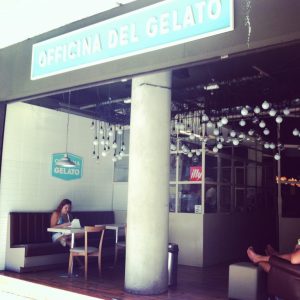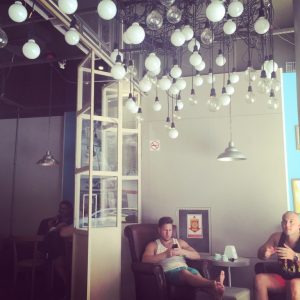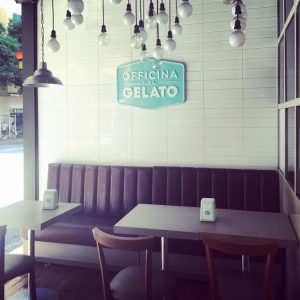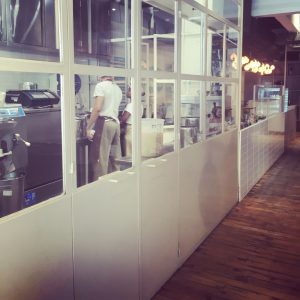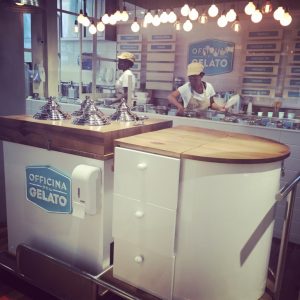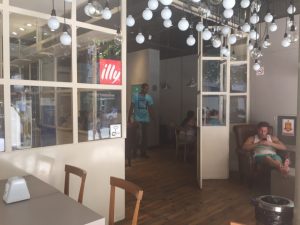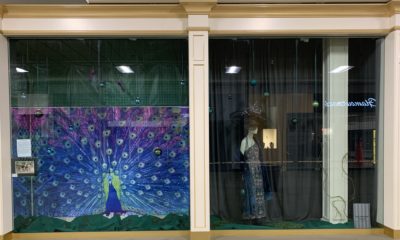IN TRUE CARIOCA (people of Rio) style, where the bright sun is the source of life, the ocean its refreshment, and the lush mountains and large palm trees are a shaded canopy, people can’t help but want to be outdoors. And restaurants and retailers alike can’t help but embrace this lifestyle.
Blurring the lines between indoor and outdoor space, in Rio, the threshold between isn’t a glass façade, instead, it’s often an open-air, occupied space. In Brazil, they refer to it as a veranda, a space that extends the retail experience out onto the street while still being under the shelter of an overhead structure, which protects customers from the tropical weather.
As I spent 10 days in Rio back in February, where the weather was a steamy 98 degrees and 100-percent humidity, my body was certainly in shock, as I left a very cold winter in Ohio behind. As you can imagine, I was seeking shelter from the weather wherever possible. Which is what led me to discover the “veranda effect,” a welcoming part of the retail experience in Rio. What’s unique to Rio’s veranda, as compared to the patio dining we’re accustomed to here in the states, is how the architecture of the space is formed. Here, the front façade is pushed back; recessed from the upper part of the urban multi-story building, giving room to form the veranda, an indoor space that feels like it belongs to the outdoor space. In many cases, the front face doesn’t exist at all, which creates a seamless environment that literally extends the street into the store.
Carolina Baltar, a retail designer from Rio explains, “When you have this opening, this veranda, in restaurants it’s a space for people to hang out. It’s another option for people to be comfortable and to stay longer and relax, here it has a meaning and a purpose. In retail shops, it’s a clever way to invite people in. It’s a transition space that makes shoppers more comfortable approaching the store. I think more stores should use this strategy because when the shop is part of the sidewalk and you are walking, you discover that you’re already wandered into the store, the entrance is more natural.”
I first took note of this at Officina del Gelato. Desperate for a reprieve from the heat, gelato hit the spot. But it was the relaxed atmosphere of the veranda, where guys in their board shorts fresh off the beach kick off their flip-flops and lounge. If you’re seeking a bit more refreshment, you can head indoors, but don’t expect to find air conditioning here – in this open-air space the only way to escape the heat of the street is by going further and further into the store. The only climate-controlled space is the in-house gelato making area.
What aids in the temperature regulation of the space is the strategic use of materials that act as a heat sink. Concrete table tops, an exposed concrete column, concrete wall panels and an abundance of porcelain tile, all materials which come from the earth, behave as climate balancing within the space, absorbing the heat during the hottest part of the day (and slowly releasing the heat during the cooler parts of the day), thus cooling off the space and refreshing customers.
Advertisement
Casa Ipanema embraces the veranda concept, as well. Without any defined storefront façade, the iconic limestone street pavers flow from the sidewalk and cover the entire first floor, extending up the back wall behind the cashwrap. Here, the entire first floor of this three-story space is the veranda. There’s no need for a storefront or window displays because the entire store is the façade and the display. To define the typical smaller veranda volume, walls and ceilings transition from the white paint to wood paneling. This darker space also creates the essence of that recessed shaded area that gives the customers that desired reprieve from the heat. This easy-breezy way of shopping is very Carioca!
To learn about Retail in Rio and find out the three major cultural trends that prevail in Rio’s retail scene, come to Rebekah and Carolina’s presentation, “Retail in Rio: An inspiring trip through the city’s retail scene,” Wednesday, Sept. 14, 9 a.m., where she and Rio de Janeiro-based architect Carolina Baltar. For more details about IRDC, Sept. 13-15, 2016, in Montreal, visit irdconline.com.
PHOTO GALLERY (12 IMAGES)

 Photo Gallery2 days ago
Photo Gallery2 days ago
 Headlines1 week ago
Headlines1 week ago
 Headlines2 weeks ago
Headlines2 weeks ago
 Headlines2 weeks ago
Headlines2 weeks ago
 Sector Spotlight2 weeks ago
Sector Spotlight2 weeks ago
 Headlines1 week ago
Headlines1 week ago
 Headlines3 days ago
Headlines3 days ago
 Headlines1 week ago
Headlines1 week ago

